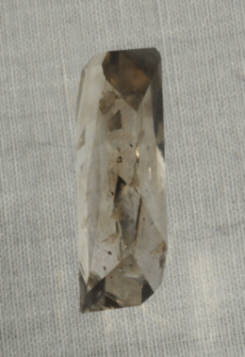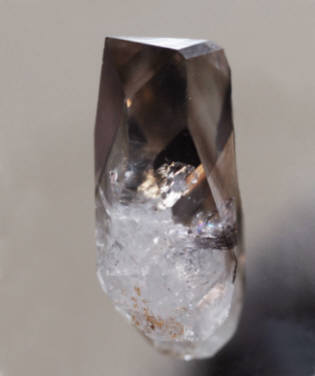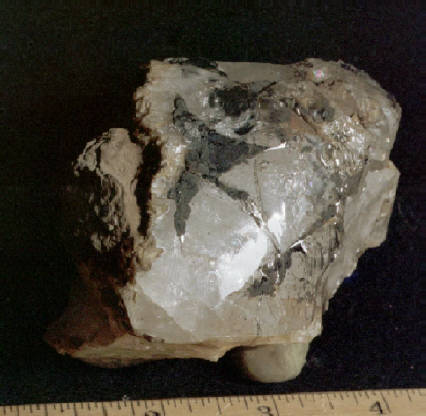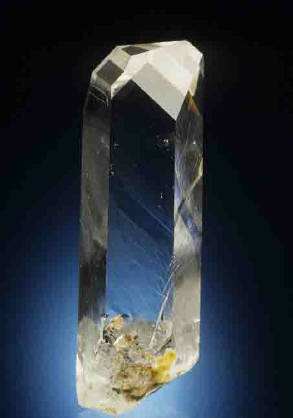Quartz Crystal Habits within Herkimer Diamond Deposits
The best website on "Herkimer Diamonds"
Larger photos of the thumbnails presented on the main "Crystal Form" page. Included is identification information and the source link is embedded there (just click). In some cases additional information and comments are provided for each photo.
Twins and Odd Shaped Crystal Forms - Are these all Herkimer Diamonds?
From Fonda, NY (DA - 2007). This is not a typical shape for Herkimer quartz. And probably no one would call this a "Herkimer diamond". Yet the quartz is the precursor to forming the classic "Herkimer diamond". Photo Dr. D. 2009
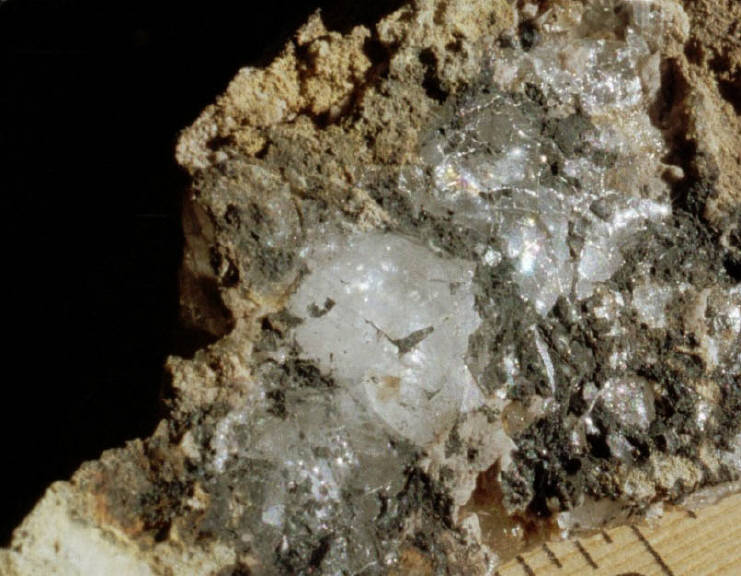
Above (left) is a Jeff Scovil photo, taken 1995 and donated 2009. It is 3.7 cm long and from the Rod Robinson collection, labeled "from Herkimer, NY". This is obviously a unique crystal shape with the termination bent like the nose of a hawk.
A second crystal (upper right) is from the TCR location and shows a similar "hawk nose" termination. It is also smoky at the top. The crystal is from the mine owners collection and is 2 cm long, Photo Dr. D., 2010
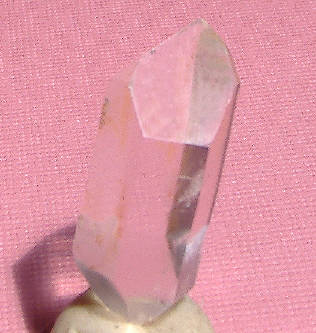
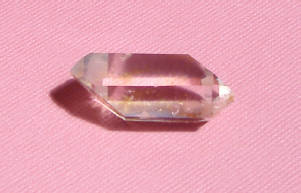
->
These two photos are of a crystal from TCR (Photo Dr. D., crystal 3 cm long). Note the elongated prismatic habit like the "hawk nose" crystal. In addition there is a single termination face that is enlarged (see the black arrows) on both terminations of this crystal. This crystal is double terminated and clear, but should it be called a "HerkimerDiamond"?
Or should it be called by its habit name?
On the right - snother crystal from TCR (photo Dr. D., crystal is 4 cm point to point). At the arrow is a single termination, but at the other end (top) are multiple terminations in parallel arrangement (called parallel growth). Note also the step pattern and that the faces on the steps are all parallel to each other (light reflection used to highlight this feature).
Parallel growth habit is also common to HBQ.
Is this a "Herkimer Diamond"? Or should it be called by it's habit?
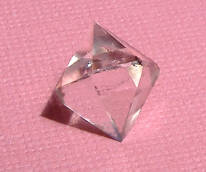
Above (left) is a smoky colored crystal, 5 cm tip to tip, from TCR (photo Dr. D. 2009). The TCR deposit has a higher frequency of these special shaped crystals that have very small m (prism) faces. The m face is labeled on the above diagram with the Dauphine crystals to illustrate the difference. The smoky color found in Herkimer diamonds is not rare, but it is not as common as the clear or white. To the right is a photo of a small crystal, more common to TCR, with the m-face almost missing. This is called the "Cumberland Habit" named after a location in England.
There is some question as to whether these should be called "Herkimer diamonds" or more appropriately give respect to their unique form and maintain the Cumberland habit term.
<- m face
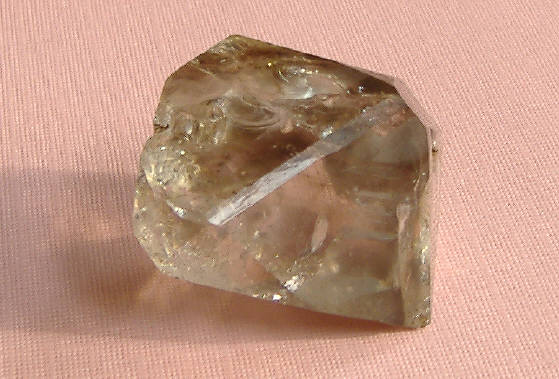
<- m face
Go to the quartz sphere page to see the next step in the progression from these domes to spheres that have hints of being crystals.
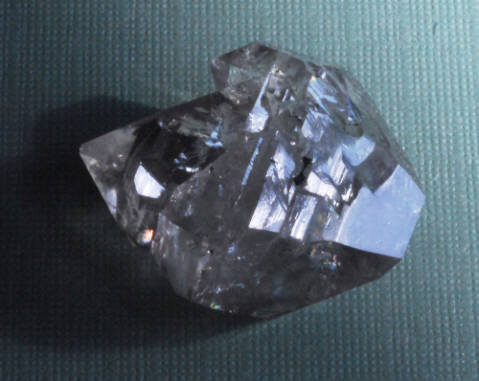
Dauphiné Habit?
Parallel Growth Habit
What crystal habit is this?
Are these to be called "Herkimer Diamonds"?
